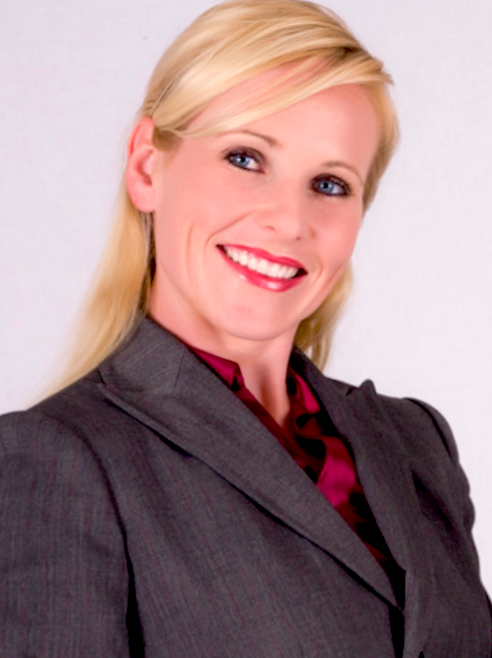Our services.
ABOUT US
Contact us
Our services.
How can we help?
Contact us
At eXceeding, we work closely with clients to fully understand the end-customer’s requirements. We define the key points and the win themes that will ensure that our clients portray themselves in the best light.
We provide guidance to clients on the information required by them. This helps them to produce the content required to answer the questions directly and to convey the win-themes and key messages that make them stand out against the competition.
We have defined ‘The eXceeding Way’, which encompasses a pragmatic approach to incrementally add value to each stage of the bid process design.
Using tried and tested methods, this process has proven to increase an organisation’s win rate from circa 25% to 80%, whilst reducing bid costs by around 30%.

Jane has over 15 years’ experience of working in B2B sales and marketing. She oversees the sales strategy for eXceeding, but also directly engages with our clients, to understand their challenges and translate them into a tailored service offer to meet their specific needs.
This initial stage is the process of finding and qualifying opportunities.
![]() Bid Identification: Our first step is to learn how to identify the best places to look for opportunities and how to find the best opportunities to match your capabilities.
Bid Identification: Our first step is to learn how to identify the best places to look for opportunities and how to find the best opportunities to match your capabilities.
![]() Opportunity Analysis: This can happen before or after the official tender documentation is released. We collaboratively review the opportunity with the client’s contributors and then score against the following characteristics:
Opportunity Analysis: This can happen before or after the official tender documentation is released. We collaboratively review the opportunity with the client’s contributors and then score against the following characteristics:
![]() Qualification: Once we have the formal documentation we run through the analysis again. When considering an opportunity, we ask questions to determine its strengths and weaknesses for your business, such as:
Qualification: Once we have the formal documentation we run through the analysis again. When considering an opportunity, we ask questions to determine its strengths and weaknesses for your business, such as:
![]() Needs analysis: In order to write a winning tender, you need to find out the drivers for change, this means really understanding the requirements on the buyer’s side. For example:
Needs analysis: In order to write a winning tender, you need to find out the drivers for change, this means really understanding the requirements on the buyer’s side. For example:
 The Stakeholders (or the buyer’s matrix). Although a personal relationship is favourable, if we know who the individuals are, we can profile through research.
The Stakeholders (or the buyer’s matrix). Although a personal relationship is favourable, if we know who the individuals are, we can profile through research.
 The stated requirements in the tender documentation.
The stated requirements in the tender documentation.
 Corporate needs and requirements.
Corporate needs and requirements.
Sometimes it’s easier to discuss your requirements directly. Contact one of our expert bid consultants now.

This is the most important stage of any bid process. Once you have established that you’d like to bid for a contract, it’s time to prepare your response. Careful planning and strong execution of this phase are key to the success of your bid.
We break this down into:
![]() Strategy: We advise clients to take time to define a clear strategy, outlining the key areas they need to focus on and the three supporting win themes. It is important to look at the tender documentation from the perspective of the end customer to ensure that you define clear and bespoke messages that meet their specific needs. Win themes are essentially promises which you make to the customer. These will always be:
Strategy: We advise clients to take time to define a clear strategy, outlining the key areas they need to focus on and the three supporting win themes. It is important to look at the tender documentation from the perspective of the end customer to ensure that you define clear and bespoke messages that meet their specific needs. Win themes are essentially promises which you make to the customer. These will always be:
We also review the market to understand the competition and analyse their strengths and weaknesses against yours.
![]() Response Planning: Once the strategy is defined, we recommend planning out your response. We ask questions like:
Response Planning: Once the strategy is defined, we recommend planning out your response. We ask questions like:
We then create a storyboard outline of the final response. When we do the final review, we can cross-check it against the initial storyboard – avoiding wasted time in last minute additions, direction changes or amendments.
When we do the final review, we can cross-check it against the initial storyboard – avoiding wasted time in last minute additions, direction changes or amendments.
There are two key parts to our storyboarding process.
 Understand the question, understand the marking criteria and page limits.
Understand the question, understand the marking criteria and page limits.
We create a standard template that meets every aspect of the scoring criteria. For example, if the evaluation criteria states “to get 5 points you must demonstrate value add and innovation”, we make sure there is a section for ‘value add and innovation’ for each response. We also include ‘evidence’ for each response and make sure it fits specifically with the question.
 Define and agree the key points in bullet form.
Define and agree the key points in bullet form.
When part one is completed we work with the subject matter experts and lead them in answering the key points that need to be articulated for each section within each response. You will then review the first drafts as a team and ask the final signoff authority to agree to the structure and content.
The final strategic stage will be allocation of the responses and creation of a review timetable. Breaking down the requirements and making sure that everyone involved in the bid process is clear on what is being asked of them, helps to avoid issues and delays further down the line.
![]() Bid Writing: Now it’s time to draft your response. Instead of being a lengthy process, this becomes a case of completing the responses against the storyboard. The information, win themes, evidence and solution have already been planned out so this stage is focused on drafting compelling, easy to read, high scoring answers.
Bid Writing: Now it’s time to draft your response. Instead of being a lengthy process, this becomes a case of completing the responses against the storyboard. The information, win themes, evidence and solution have already been planned out so this stage is focused on drafting compelling, easy to read, high scoring answers.
![]() Bid Review: This stage involves reviewing the final responses to give direct (and helpful) feedback to the authors. It is a means of testing your submission to ensure that you are submitting the best possible bid. As part of this process, we provide independent scoring from an evaluator’s perspective to further improve the outcome.
Bid Review: This stage involves reviewing the final responses to give direct (and helpful) feedback to the authors. It is a means of testing your submission to ensure that you are submitting the best possible bid. As part of this process, we provide independent scoring from an evaluator’s perspective to further improve the outcome.
Remember we are reviewing against the agreed storyboards. Ask yourself:
Presentations: At the presentation stage the customer is looking at you to deliver against their requirements. This is where the deal is won or lost, regardless of what it says in the scoring criteria! Sufficient time and planning should be set aside to nail the presentation.
We will coach you on the best approach to preparing for an delivering the presentation. This includes:
Customers that ‘land well’ into BAU typically increase their spend by 40% in the first year.
Handover into business as usual (BAU): This is the commercial bit! Some say winning the bid is the easy part, but clearly articulating the solution from the start means the commercials don’t have to be such a struggle. It increases accuracy and ensures a smoother transition.
It may seem obvious that someone from delivery should be included on the storyboarding process, but they are frequently forgotten until contract signature! In our experience, it is very important that the entire team – from pitch through to transition – is involved from the start, to ensure a smooth transition to business as usual.
We carried out some analysis, and customers that ‘land well’ into BAU typically increase their spend by 40% in the first year. Those customers that don’t, will typically start the relationship with the contract on the table, having been poorly prepared for the handover process. Sadly the discussions are less focused on growth in this scenario.
Our people are our greatest asset and we are proud to employ a highly skilled team of bid experts.

Our national network of bid consultants has been consulting on drafting winning bids for decades. They work across a huge variety of sectors, with projects ranging from a few thousand to multi-million-pound contracts. They are writing and scoring bid responses every day.
A well planned, tailored and focused bid process management plan can:
Don’t just take our word for it. See what our clients have to say…